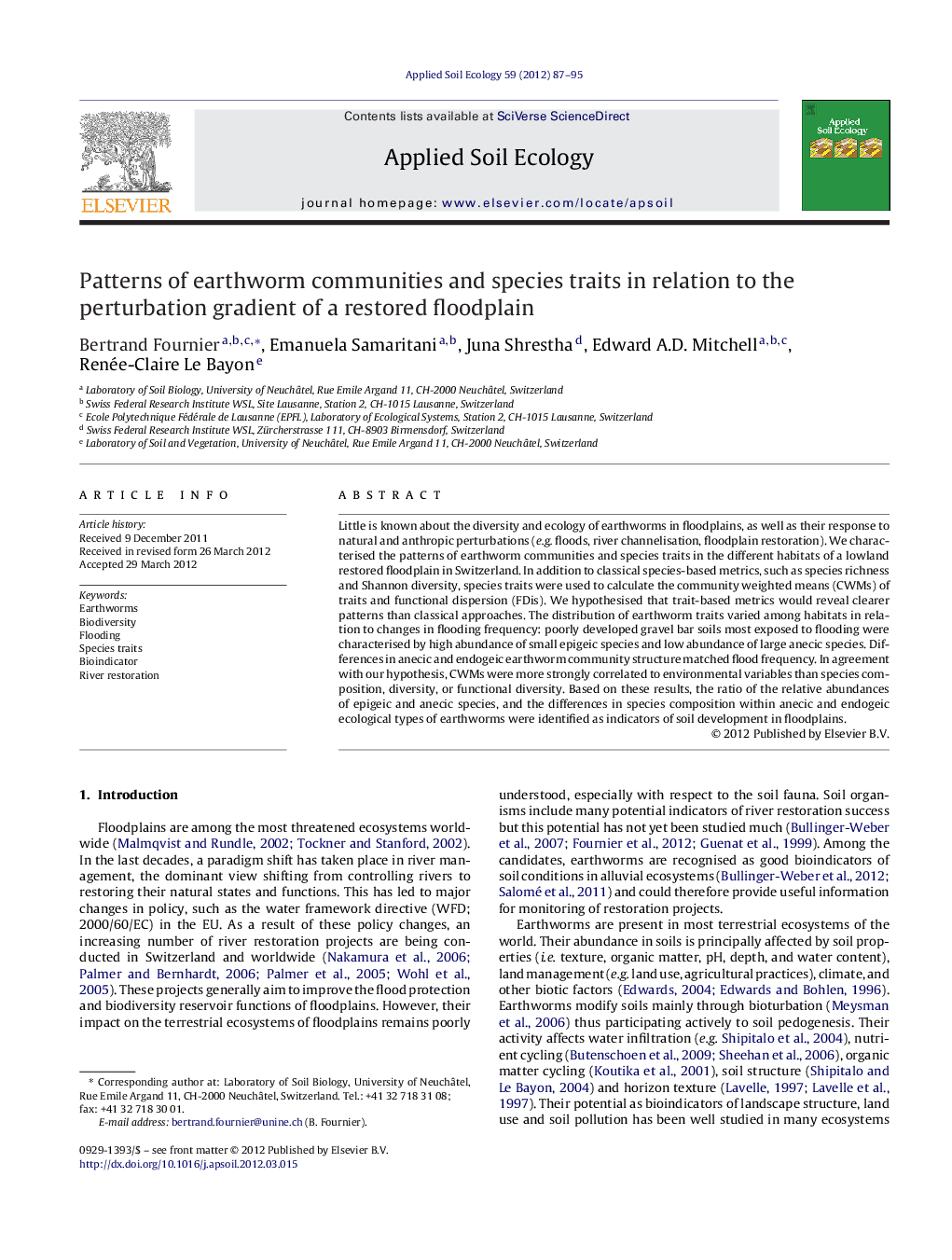| کد مقاله | کد نشریه | سال انتشار | مقاله انگلیسی | نسخه تمام متن |
|---|---|---|---|---|
| 4382591 | 1617824 | 2012 | 9 صفحه PDF | دانلود رایگان |

Little is known about the diversity and ecology of earthworms in floodplains, as well as their response to natural and anthropic perturbations (e.g. floods, river channelisation, floodplain restoration). We characterised the patterns of earthworm communities and species traits in the different habitats of a lowland restored floodplain in Switzerland. In addition to classical species-based metrics, such as species richness and Shannon diversity, species traits were used to calculate the community weighted means (CWMs) of traits and functional dispersion (FDis). We hypothesised that trait-based metrics would reveal clearer patterns than classical approaches. The distribution of earthworm traits varied among habitats in relation to changes in flooding frequency: poorly developed gravel bar soils most exposed to flooding were characterised by high abundance of small epigeic species and low abundance of large anecic species. Differences in anecic and endogeic earthworm community structure matched flood frequency. In agreement with our hypothesis, CWMs were more strongly correlated to environmental variables than species composition, diversity, or functional diversity. Based on these results, the ratio of the relative abundances of epigeic and anecic species, and the differences in species composition within anecic and endogeic ecological types of earthworms were identified as indicators of soil development in floodplains.
► We studied the patterns of earthworm community in a Swiss lowland floodplain.
► We assessed the relationships between these patterns and environmental variables.
► We discussed the potential use of earthworms as bioindicators of restoration.
► Earthworms are pre-dominantly influenced by flood dynamics.
► A ratio of epigeic and anecic species indicates soil development and functioning.
Journal: Applied Soil Ecology - Volume 59, August 2012, Pages 87–95